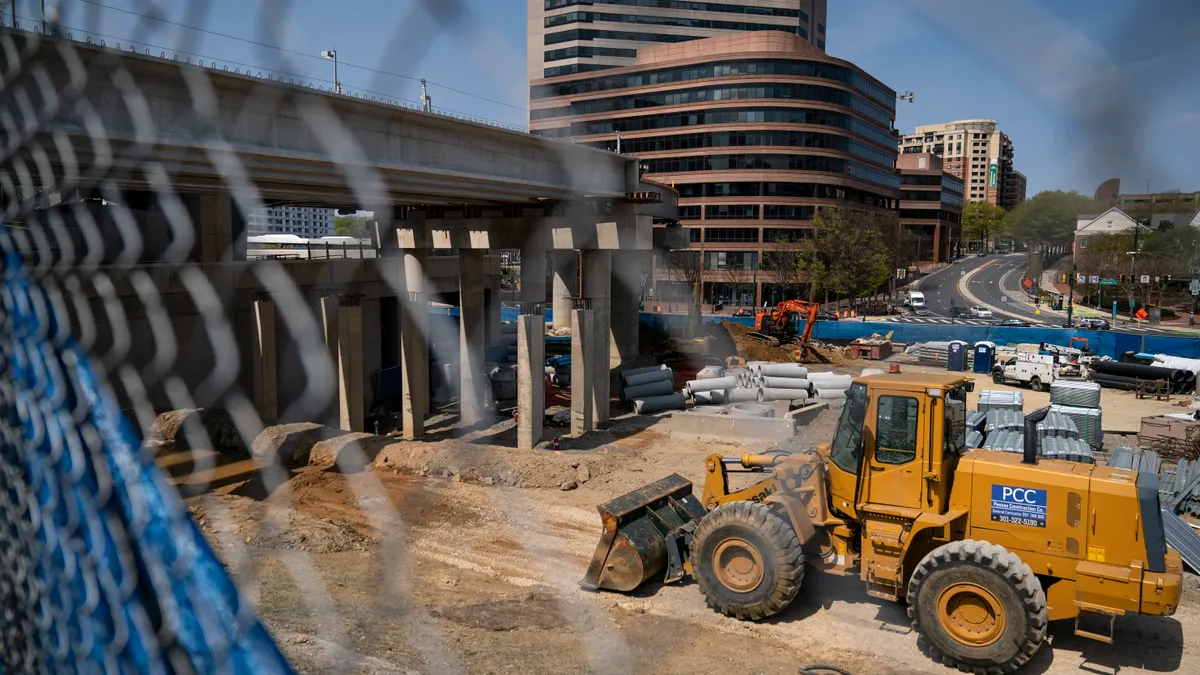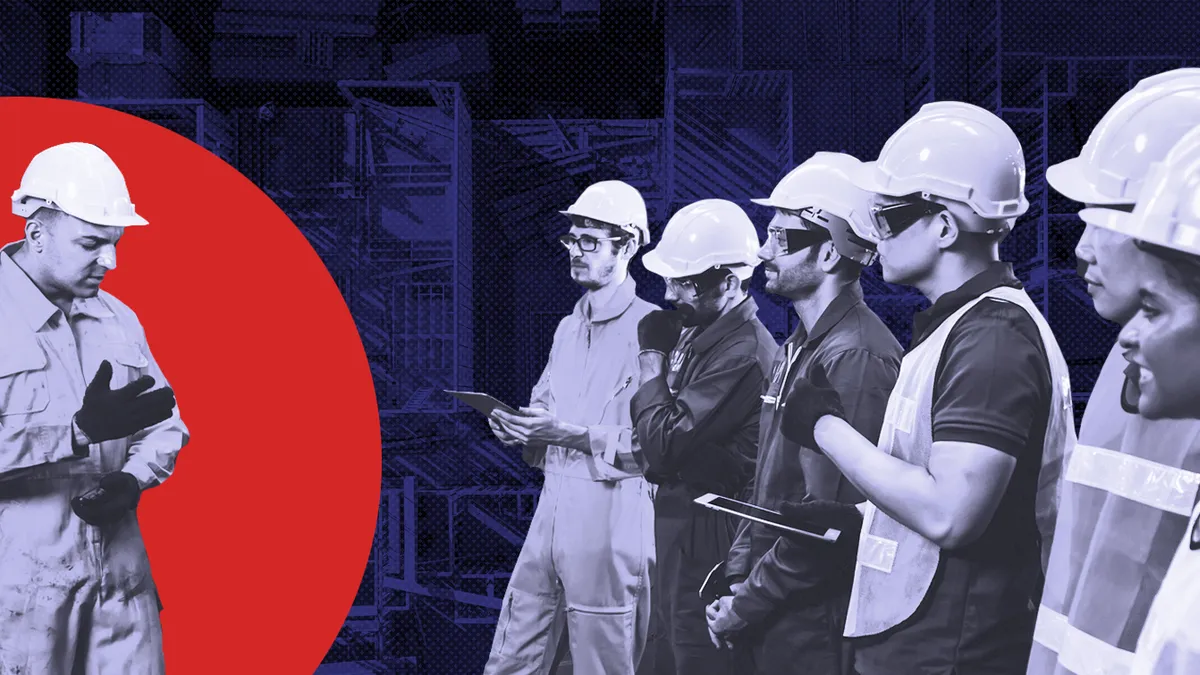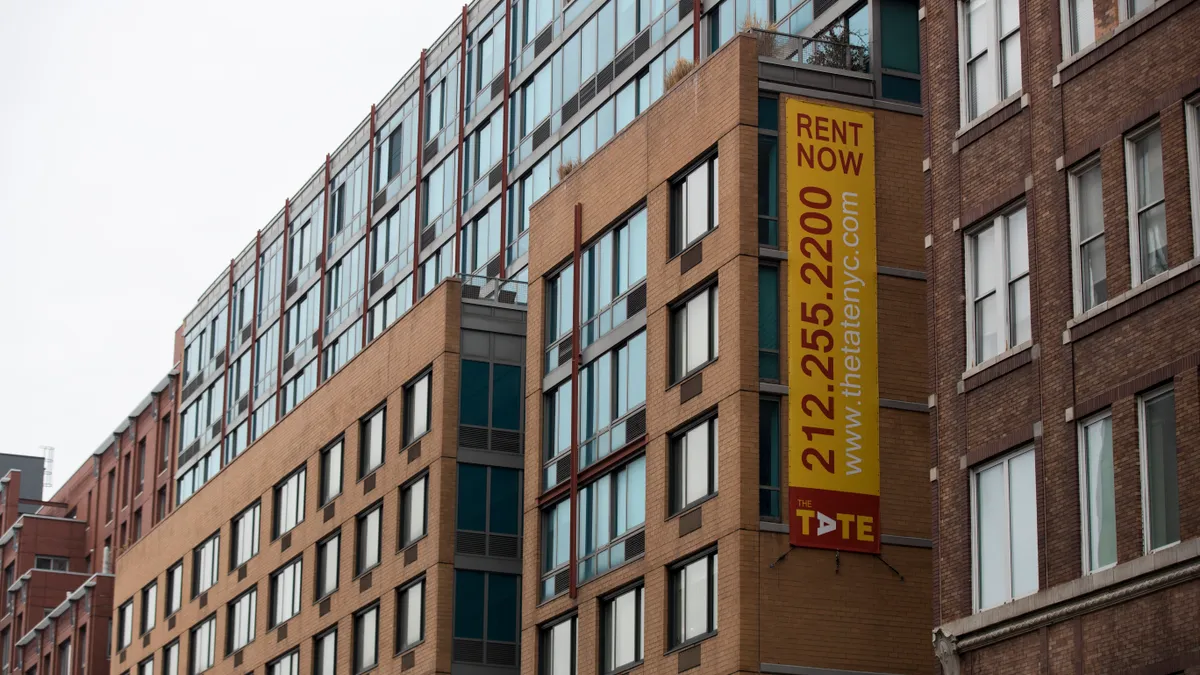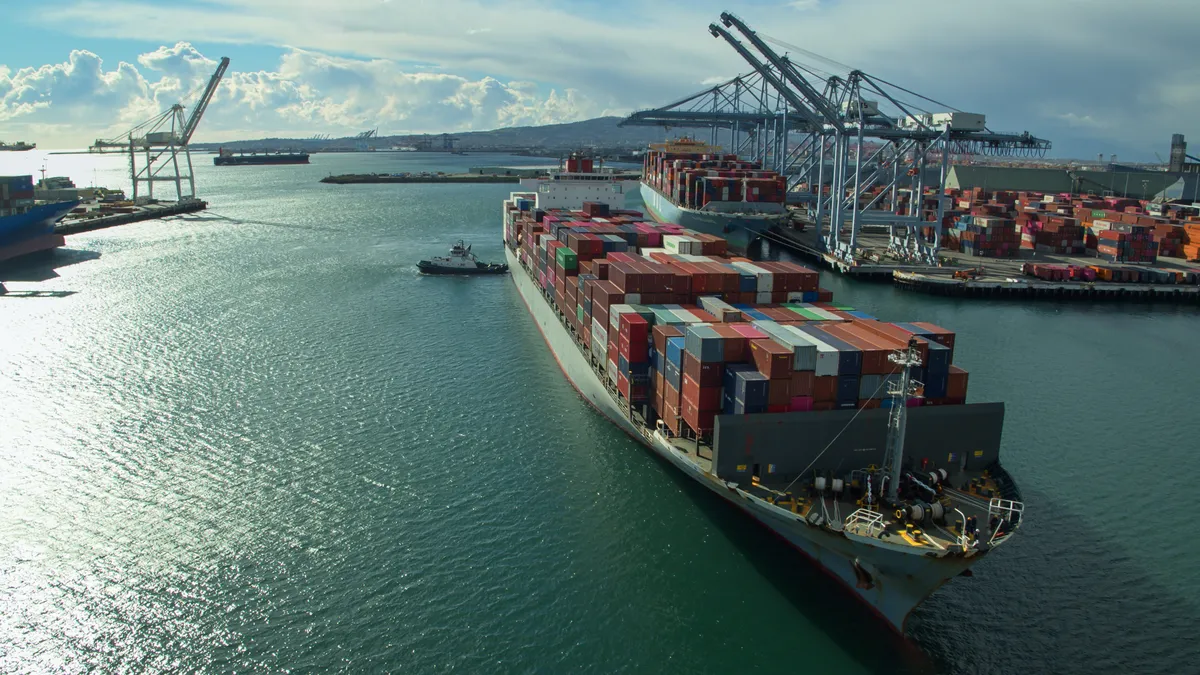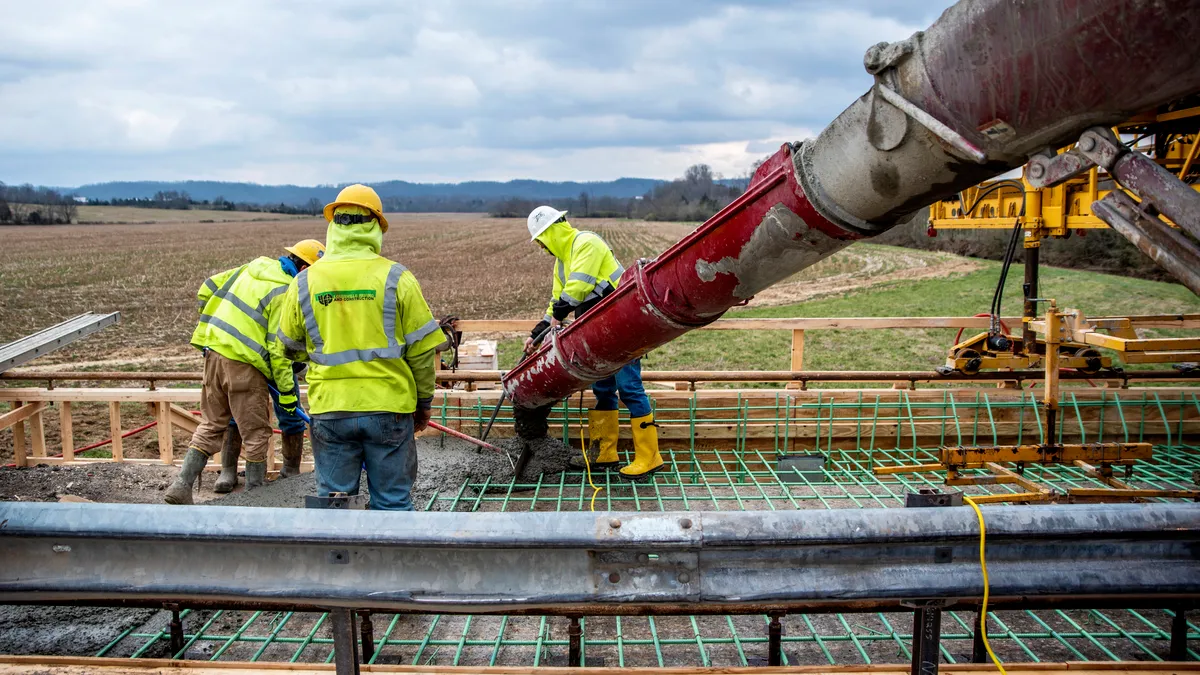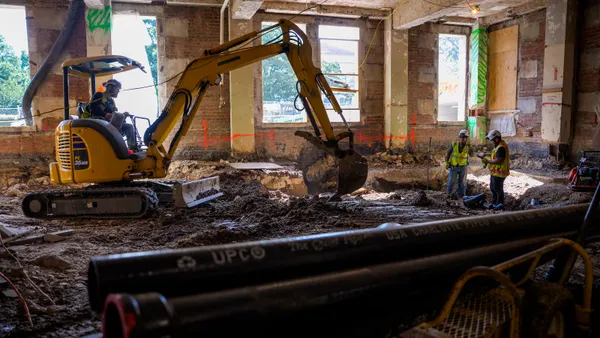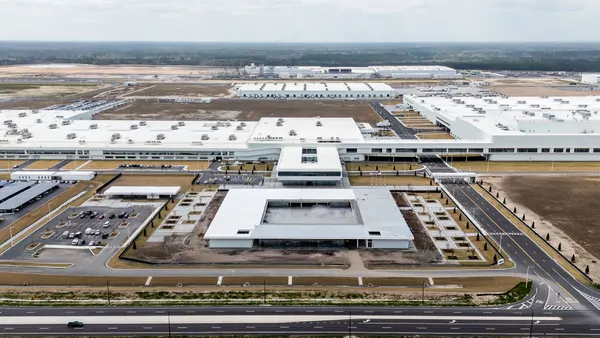With the signing of the Infrastructure Investment and Jobs Act, 2022 is shaping up to be a huge year for infrastructure. About $125 billion of these new federal funds will be available for procurement, according to Federal News Network, and it's important for contractors to understand where they're directed, the strings attached, when they will be disbursed and more.
While details are still emerging about the IIJA, here are seven things to keep in mind:
1. It puts an emphasis on public-private partnerships.
Public-private partnerships have become more popular for civil construction projects across the U.S. in the past 20 years, according to education company Lorman. The infrastructure act, which mentions PPPs 42 times, will likely popularize this type of procurement method further. Many types of initiatives listed in the act contain grantee selection criteria that consider non-federal contributions to a project, including those from public-private partnerships.
There are three other specific measures that are likely to boost PPPs. They are:
- Section 80403 would raise the cap on private activity bonds for highway and surface freight transfer facilities. The increase from $15 billion to $30 billion should help address current demand and lower the cost of private financing on future PPP projects.
- Section 71001 provides $100 million, disbursed over five years, for a program to provide technical assistance with PPP procurement for project sponsors that lack capacity to engage the experts they need.
- Section 70701 requires a value-for-money analysis to ensure that certain projects — those receiving Transportation Infrastructure Finance and Innovation Act (TIFIA) and Railroad Rehabilitation & Improvement Financing (RRIF) credit assistance — evaluate whether a PPP would provide public benefit over a conventional delivery method.
2. It boosts union and minority jobs.
President Joe Biden said the IIJA will "drive the creation of good-paying union jobs," and labor union leaders lauded its passage. The vast majority of infrastructure act funds will be covered by Davis-Bacon act worker protections. In addition, the Disadvantaged Business Enterprise (DBE) programs already in place at the U.S. DOT and the Federal Transit Administration create targets for DBE business participation in federal contracts, and will ensure that at least part of the funds are awarded to businesses led by women and people of color.
The IIJA supports historically disadvantaged workers and union jobs in a variety of other ways, too. The act establishes a Minority Business Development Agency within the Department of Commerce to help DBE companies get access to contracts, capital and grants. In addition, the act supports the creation of training centers for the installation and maintenance of energy-efficient building technologies, run in partnership with employers and labor unions.
When implementing the work, government agencies must prioritize high labor standards, including paying prevailing wages and offering the chance to join a union. Project labor agreements, which establish the terms and conditions of work on a specific jobsite and end when the project is completed, are expected to grow in use under the law.
"While the IIJA does not mandate the use of PLAs, the Biden administration encourages and prioritize PLAs on government-funded projects," according to attorney Brian Lundgren of New York-based firm Jackson Lewis. "State and local governments, likewise, encourage, prioritize and sometimes even mandate the use of PLAs."
The act also directly supports the domestic manufacturing of railcars, electric buses, ferries and more. The IIJA strengthens requirements for iron and steel to qualify as being produced in the U.S., makes several other types of construction materials subject to these standards and strengthens origin standards for other manufactured products.
3. It encourages the use of construction technology.
The act contains $20 million per year over five years, for a total of $100 million, for advanced digital construction management systems and related technologies. The new program aims to maximize interoperability with other systems, boost productivity, reduce project delays and cost overruns, manage complexity and enhance safety and quality.
While language in the IIJA is neutral, Si Katara, co-founder and president of HeadLight, a visual-based inspection technology for infrastructure project, told Construction Dive that this funding will likely flow to visual-based inspection technologies, construction management tools, 3D modeling and digital twin technology, electronic ticketing technology and drones.
Contech experts and contractors alike welcomed the funding, though they say an even greater investment is needed. Nonetheless, they said it's a positive indicator of the sector's growth and importance.
"The industry must, after frustratingly long delays of several decades, leverage innovation by committing to invest in advanced digital design and construction management systems," said Barry LePatner, CEO of Insights+ and founder of LePatner & Associates, in an email.
4. It focuses on environmental projects.
The IIJA marks the first major federal investment to adapt to the impacts of climate change, and also seeks to remediate ongoing sources of pollution and environmental degradation. In particular, the law seeks to make infrastructure more resilient to extreme weather, and to adopt greener technologies.
The legislation aims to upgrade power infrastructure like dams to produce and deliver clean energy across the country. It will also clean up legacy pollution from former industrial and energy sites, remove lead pipes and remedy other drinking water contaminants, reclaim mines that are no longer in use and cap abandoned oil and gas wells. It contains $47 billion for communities to adapt to fires, floods, storms and droughts, which scientists say are being exacerbated by climate change.
Nevertheless, the act doesn't do much to directly reduce climate change-inducing greenhouse gas emissions. According to climate news outlet Grist, "This infrastructure bill, which Biden initially envisioned largely as a climate package, pretty much exclusively focuses on what Republicans like to call 'traditional' infrastructure — bridges, tunnels, roads, and the like."
However, its emphasis on improving rail, buses and electric vehicle charging networks and creating safer streets for vulnerable road users like pedestrians and cyclists encourages greener transportation choices.
"Put to use wisely, that funding could do much to promote walkable communities and more sustainable development patterns,"according to the Congress for New Urbanism.
5. It will take time to trickle to the projects that need it.
At the press conference following the legislation's passage, Biden said that Americans would start to see the impacts of the IIJA "within the next two to three months as we get shovels into the ground." While the first tranche of funds is already heading to states to improve water infrastructure and remove lead pipes, much of the funds will take more time to get to projects.
The law is not a quick-hit stimulus package, according to Brookings Institution analysis. Rather, it's a longer-term investment, and much of the funding will be disbursed annually in set amounts for a period of five to 10 years.
For many programs, the federal government will allocate funding to states, which will then dole out money to cities and towns, leaving prioritization of projects up to the state's discretion. Most of the projects will be identified and carried out through state and local government agencies, which may need to hire experts, build out new programs, secure additional funds and more.
"There are scenarios where the industry achieves historic growth over the next few years while looking optimistically to the flow of the infrastructure funding from the Biden administration and built-up demand delayed by the pandemic," LePatner said.
6. Roads and bridges are the biggest beneficiaries.
The law contains a total of $284 billion in transportation spending, which goes toward many types of projects including ports and waterways, road safety projects, airports, public transportation and electric vehicle charging stations. The largest amount, $110 billion, is designated for roads and bridges. That sum is the single largest investment in repairing and reconstructing U.S. bridges since the construction of the interstate highway system, according to a White House press release.
An estimated 173,000 miles of U.S. roads and 45,000 bridges are in major need of maintenance, per the release. This law aims to rebuild the most economically significant bridges as well as thousands of smaller bridges, and repair and upgrade crumbling roads and highways.
It also includes the first Safe Streets and Roads for All program, with the mission of reducing traffic fatalities. The act designates $1 billion for stitching back together communities that were divided by roads or highways, in particular urban neighborhoods that were historically occupied by people of color.
A 2022-2026 Market Analysis from the American Road and Transportation Builders Association (ARTBA) indicates that transportation construction market activity will grow 5% in 2022, due to work beginning on IIJA-supported projects, as well as an improving economy. ARTBA expects the biggest growth to be in these sectors:
- Amtrak and Class 1 rail work (+17%)
- Bridge and tunnel construction (+9%)
- Port and waterway projects (+6%)
- Highways and streets (+5%)
- Airports (+3%)
Subway and light rail work, however, is expected to decline by 10%, and despite the historic investment into public transit, experts say it won't be enough to address the backlog.
7. It decreases permitting delays through One Federal Decision.
The IIJA re-establishes One Federal Decision, which aims to streamline and expedite the federal environmental review processes required for major infrastructure projects under the National Environmental Protection Act. OFD was originally part of a Trump administration executive order that was revoked by Biden earlier this year.
OFD requires cooperation between agencies, concurrent review processes and the creation of a "permitting timetable" with a fixed deadline. The new process does not circumvent any permitting requirements, but rather reduces the time required to process surveys — and thus the monetary impact of delays on contractors — by coordinating agencies to work simultaneously.
This process is managed through a lead federal agency. It also imposes a page limit on the review documents produced in the course of an environmental review, and installs a 90-day limit for an approval decision after the production of the review document.
AGC President Stephen Sandherr praised OFD in a press release, saying the measure would "[cut] the amount of time needed for federal reviews of infrastructure projects." In fact, analysts predict that OFD may save more than the amount of the entire infrastructure bill in costs associated with permitting delays.
This story first appeared in Construction Dive's weekly Infrastructure newsletter. Sign up here to receive it every Tuesday.



